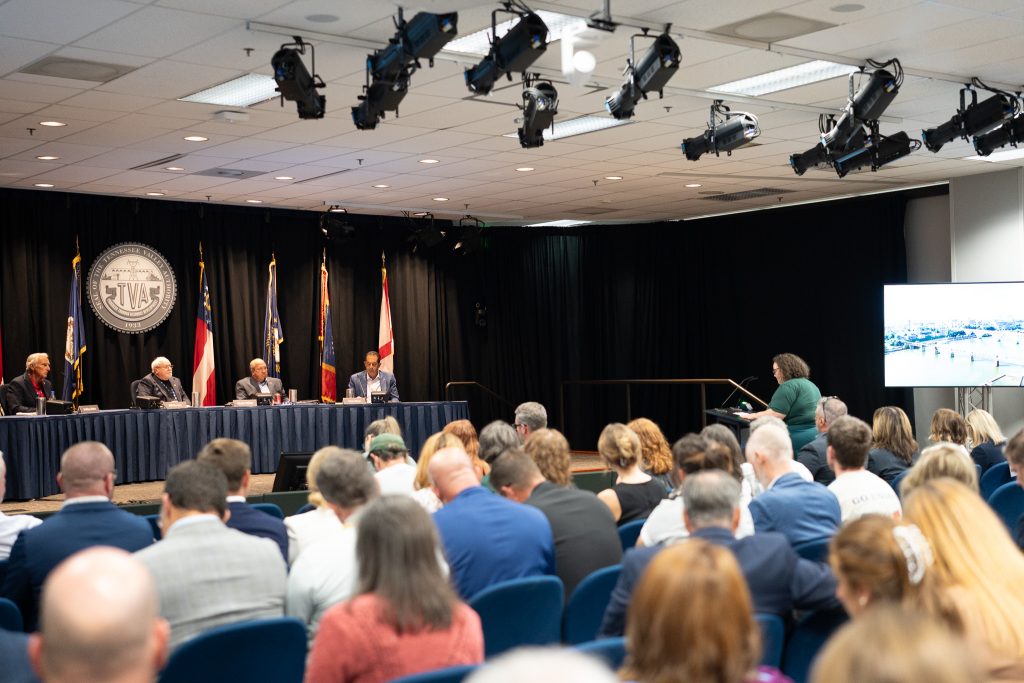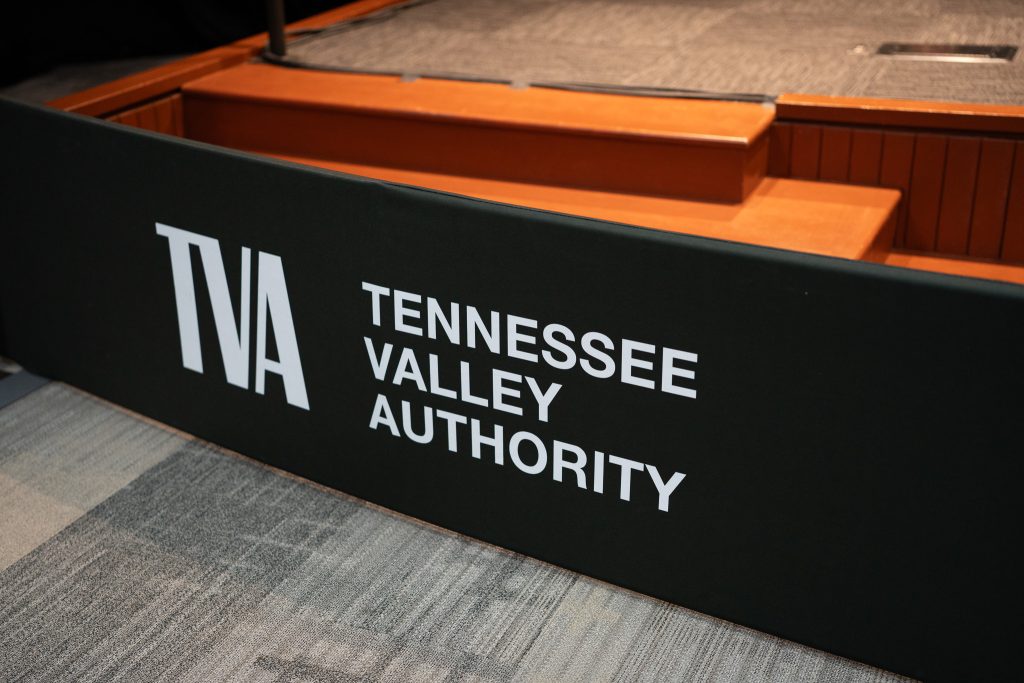Mountaintop Removal by any Other Name
Ask any Tennessean to sing the chorus of “Rocky Top,” an official state song and the fight song of the University of Tennessee, and you’re sure to hear a rousing refrain of “Rocky Top, you’ll always be home sweet home to me.” But in some parts of east Tennessee, residents and visitors who wish that they were on ol’ Rocky Top may soon find it means something very different now. Less than an hour’s drive from Knoxville, a coal company is blasting the tops off mountain peaks to get at coal, claiming their new mining technique can put the peaks back together again from the rocky rubble. This is causing many local residents to fear for their homes, families, and the mountains themselves, leaving the fate of their “home sweet home” very much in question.
In early July, the Knoxville Office of Surface Mining (OSM) and the Water Pollution Control office of the Tennessee Department of Environment and Conservation (TDEC) issued permits for a 2100-acre surface mine in the community of Elk Valley in Campbell County, Tennessee. This permit allows the Robert Clear Coal Company to remove the three peaks of Zeb Mountain using a new type of mining called cross ridge mining.
Cross ridge mining is a variation of mountaintop removal, in which all or most of a mountain is removed in order to reach thin seams of coal. Unlike mountaintop removal, which leaves behind flattened mountains, cross ridge mining involves temporarily moving rock onto a neighboring strip mine. After the mining is complete, the operator purports to bring the rock back and pile it back up on the original site in order to put the mountain back to its approximate original contour. The word approximate is key, given that the peaks will not necessarily be restored to their original elevation and OSM’s guidelines call for 20 foot wide terraces every 50 feet.
According to critics of this type of mining, even if an operator is successful in rebuilding a mountain after it has been blasted apart and the coal has been removed, it will not look or function like the mountain that was there before.
“As far as I’m concerned, if they are taking the top off the mountain, that’s mountaintop removal no matter what they call it,” said Cathie Bird, Elk Valley resident and member of Save Our Cumberland Mountains (SOCM), a 30-year-old grassroots organization that works for social, environmental and economic justice in rural Tennessee.
Since local SOCM members first learned of the Zeb Mountain mine permit application in the spring of 2002, they have been busy organizing in Campbell County. They were successful in getting the Campbell County School Board to pass a resolution asking OSM to request that Robert Clear do a pre-blast survey of Elk Valley Elementary School, which is just 700 feet outside of the half mile pre-blast survey area. Under federal law, coal companies are required to offer a pre-blast survey to homeowners within a half-mile of the permit area. Residents can have the condition of their home, structures and wells documented before blasting begins.
“We’ve lived around strip mining all our lives and we know that it will crack your foundations, sink your wells and that coal trucks can turn over on public roads,” said Charles Blankenship, who lives less than 1/4 mile away from the Zeb Mountain permit area. “There are too many homes near Zeb Mountain to mine without affecting the people living nearby.”
Playing the sediment control shell game
Since the project was proposed, residents have been concerned about how the coal company will control sedimentation and run-off from the over one thousand acres that will be disturbed. In the current mining plan, Robert Clear has located all but one sediment basin up on the mine site. However, two sediment pond failures this past spring of 2003 at Bennetts Fork, a 750-acre cross ridge mine in Claiborne County, demonstrates the risk of building sediment structures on mining sites. In March, a basin slid into Burrell Creek impacting 150 feet of the stream; in May, another basin slid approximately 500 feet down slope.
“Robert Clear Coal Company flip-flopped several times on its plan for controlling sediment generated by the mining operation,” explained Elk Valley resident, Paul Kelly. “First the company proposed building silt collection ponds up on the mine site. When SOCM expressed concerns about the safety of basins located on the mine site the company, OSM and TDEC cooked up a plan to put sediment collection structures in streams. When the public questioned the legality of using streams as sediment basins, the company moved most of the basins back onto the mine site. They seemed to be playing a shell game with their sediment control plan.”
“One factor that played a key role in Robert Clear being able to get this permit is how TDEC made the waters of the state determination,” said SOCM member Ann League. “TDEC says that the waters of the state, which require a certain level of protection from the state, begin just outside the permit area.” This allows Robert Clear to mine through everything above this determination. If TDEC had determined the waters of the state to begin higher up on the mountain, this permit could not have been issued. “When we asked TDEC for it’s documentation on how they made this determination, they told us that TDEC officials had written their field notes on the back of a map that belonged to Robert Clear Coal Company and returned it to the coal company,” League added.
Mining impacts and problems already occurring
Mining of Zeb Mountain began in July, right after the permit was granted, and immediately members of the local SOCM chapter began conducting citizen inspections. Monitoring activities include keeping a record of how much rain falls and taking water samples when blasts are felt, reporting overloaded coal trucks and taking pictures of area streams. Negative impacts have been occurring, as critics predicted. The sediment pond on the mine bench is leaking and Dan Brach is filled with sediment. This has led to the filing of citizens’ complaints.
During one citizen inspection, members were able to see that the TDEC did indeed allow the Robert Clear Coal Company to put a sediment pond, or sump, in Dan Branch, which effectively dammed up the stream and diverted it to another sediment pond. Chapter members argue that TDEC should not have allowed the coal company to do this, that the stream above the sump should also be protected by the state as waters of the state.
“TDEC’s website says that ‘To protect your rivers, protect your mountains,’” said Elk Valley resident, Cathie Bird. “It’s clear to me what lawmakers intended when they wrote the Tennessee Water Quality Control Act. They intended for the law to protect the waters of the state from pollution, and that is not what we see TDEC doing with this mining permit.”
Residents of the Elk Valley region are worried about more than the sediment control plan and how it could affect local streams. They cite the number of homes close to the mine site — around 100 within a half-mile of the mine area — and proximity of the local elementary school as their most serious concerns. Other concerns are that blasting, truck traffic, flooding, or a landslide could damage life or property near the mine site.
“I’ve felt shots go off in the middle of the night,” notes local resident, Billy Washam. “According to the permit, they aren’t supposed to be blasting after sundown. The permit is for ten years; this is just the beginning and if Robert Clear isn’t following the law now, what will he be doing a few years down the line?”
Elk Valley residents also question the stability of a mining operation where entire mountain peaks will be removed and then rebuilt again. After blasting apart the mountaintop and removing the coal, Robert Clear will attempt to pile the rubble back up to the height of the original mountain. Residents worry that some of this rubble will come sliding down on the people living below.
“What we are looking at here is a delayed valley fill,” said Charles Blan-kenship. “They are going to pile 33 million cubic yards of mine spoil up where there used to be a mountain. It is only a matter of time before that mine spoil slides down in to the valley, and the problem is we live in the valley.”
Coal companies take aim at additional targets
A couple miles away from Zeb Mountain, another cross ridge mining operation has been proposed for Braden Mountain. The permit for this 665-acre area has already been approved by OSM. However, in 2000, Gatliff Coal Company, the company that holds the permit to mine on Braden Mountain, indicated that they were not planning to begin mining in the near future and requested that they not have to post a performance bond. By going into “Bond Deferred Status,” the company avoids having to reapply for a permit when they decide to open the mine.
The Tennessee Valley Authority (TVA) recently announced that it is preparing to take new bids from coal operators to mine the coal under Braden Mountain. TVA indicated in a draft document about the proposed lease that “recent developments in the coal market have made the formerly proposed mining operation more economically attractive, and TVA now proposes to enter into a new lease agreement.”
With pressure coming from SOCM, the Tennessee Ornithological Society and Tennessee Forestwatch, TVA decided to upgrade the Environmental Assessment to an Environmental Impact Statement, which will examine the impact cross ridge mining could have in the Royal Blue Wildlife Management Area. TVA has 12 more proposed cross ridge mines within the Kopper’s Coal Reserve in Tennessee.
At the same time, four federal agencies, including the Office of Surface Mining, are currently working on an Environmental Impact Statement (EIS) for surface coal mining, including cross ridge mining, in Appalachia. This study is investigating the impact of these mining operations on the nation’s waters, fish, and wildlife.
Inadequate Environmental Review by OSM
Although four federal agencies plus TVA saw the need to do a full impact study of mountain top mining, OSM’s Knoxville office did not think an EIS was needed for the Zeb Mountain mine. When the Knoxville Field Office issued the permit in June they also issued a short “Environmental Assessment,” in which they determined that the mining operation would have “no significant impact” and that a full EIS was not necessary.
Many people and organizations felt otherwise. The Tennessee Chapter of the Sierra Club, Appalachian Voices, the Southern Appalachian Biodiversity Project and SOCM filed a lawsuit against OSM for not completing an EIS.
“Why were state and federal agencies so antsy to get this permit approved instead of waiting to see what these other studies say?” asked Ann League. “It seems like they are just wasting taxpayer money doing these studies and then not even looking at them.”
“The Office of Surface Mining and these coal companies are testing the waters to see if they can begin mountaintop removal operations here in Tennessee,” commented Cathie Bird of Elk Valley. “If the state allows this coal company to take the top off this mountain, we will begin to see the tops come off mountains throughout Tennessee’s coalfields, just like they are in West Virginia and Kentucky. Is that what Governor Bredesen wants to be remembered for?”
“We are calling on Governor Bredesen to stand up for our community and our state,” said Bird. “It is the Governor’s responsibility to protect the waters of Tennessee from pollution from mining.”
Related Articles
Latest News
More Stories

Leave a comment
Your email address will not be published. Required fields are marked *





Leave a Comment